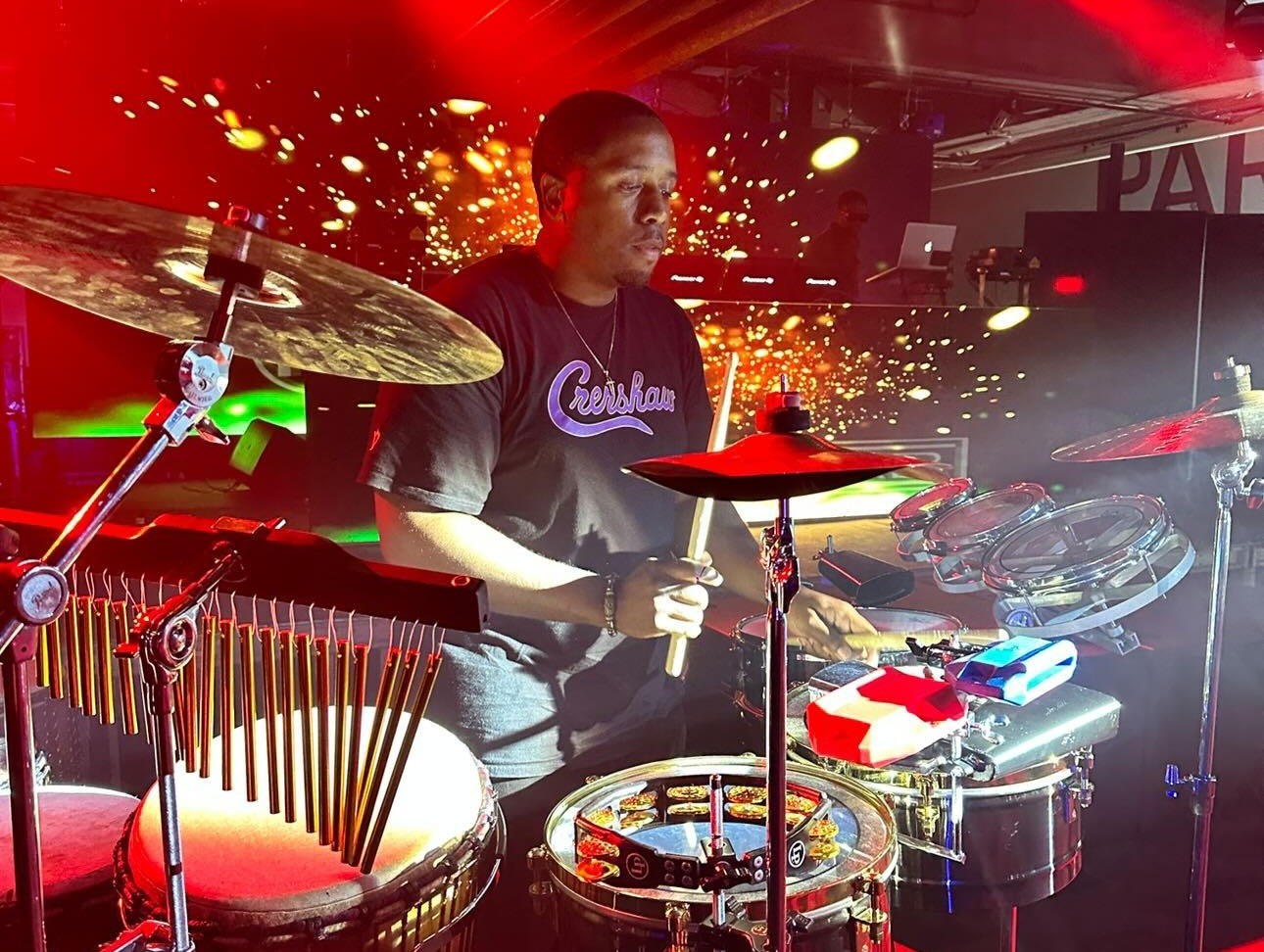We’re excited to introduce you to the always interesting and insightful Aaron Sturgis. We hope you’ll enjoy our conversation with Aaron below.
Aaron, thanks for joining us, excited to have you contributing your stories and insights. Did you always know you wanted to pursue a creative or artistic career? When did you first know?
My path to becoming a professional has been more organic than intuitive. It started out just playing drums in Piedmont Park as a hobby, and quickly caught the eyes & ears of bypassers in the park, who admired my music style and creativity. This led to me to being invited to perform at small gatherings, which then caught the attention of organizers from larger events. I was eventually ushered into professional relationships with owners, venues & other collaborators rather quickly, due to my space not being occupied by many. The key to being a professional is maintaining “people relationships” and being easy to work with. In my case, this quality was natural for me and, because of that, other people have allowed me to pursue my talent professionally now. I’d have to say those first admirers kind of knew before me!

Great, appreciate you sharing that with us. Before we ask you to share more of your insights, can you take a moment to introduce yourself and how you got to where you are today to our readers.
My name is Aaron Sturgis, better known as “Son-Of-Rhythm”. I am a multi-percussionist who infuses African & Latin drums with modern music. I also perform as a DJ and electroacoustic drummer.
I see a lot of stories where the pandemic was kind of an upstart “breeding ground” for creatives. For me, that never really happened. It was after the pandemic was over, that I got my start into this world of percussion. I bought my first hand drum, the cajon, and developed an idea for a multi-percussion setup combing African & Latin drums. My sound grew quickly as I began playing for larger venues. As I became exposed to more and more genres of music, the needs of my clients encouraged me to continue growing my repertoire of percussion instruments learned. This eventually crossed into other areas of entertainment, where I am now merging electronic instruments with acoustic drums.
Currently, I specialize in performing Afrobeats, Amapiano, Afro House, and many other genres of the black diaspora.


What can society do to ensure an environment that’s helpful to artists and creatives?
Understanding the exchange of art to people, and vice versa. Being an artist, creative, or performer is a tumultuous hobby. It requires a lot of time alone, practicing the perfections of a performance that we exchange with other human beings to make them dance, laugh, sing, think, feel, etc.
If you are moved by someone’s art in anyway, exchanging something back is the best support to keep that artist going. It can be monetary. It can simply be a compliment. Words of encouragement and honest feedback can go a long way!


Is there a particular goal or mission driving your creative journey?
Yes. Technology is propelling our society faster than we are able to process the consequences. With music, I am seeing (or rather hearing) the reliance of synthetic processes over authentic art & purpose. While technology has great tools that will take us farther than we can imagine, music is also great when it is performed intuitively in its purest form and natural limitation of sound. When we navigate the boundaries of nature & physics, then use our minds and bodies to step outside those tangents of sound with a physical instrument (that was indigenous to multiple generations before us), it is a euphoric experience that can’t be duplicated with source codes and devices.
Just consider the djembe drum. Right now, I have the luxury to watch a video of a djembe drummer from Mali (a country in West Africa) in the palm of my hand, via my phone. As great as this technology is, I still can’t experience the full sound of the drum’s bass and overtones vibrating through my body and echoing in my immediate surrounding. Sure, my phone has processed the sound to be audible, but there is no comparison to the physical senses being aroused when you hear that drum in-person. When I hear a drum carved out of lenke wood, it sounds like Mali! I’ve never been there, but their craftsmanship is like no other; and my connection with their drums easily takes me there versus hearing a synthetic waveform on a drum machine.
There is a connection with indigenous sound that can only be explained through metaphysical terms. While I fear the digital music era might vacuum these feelings, I can at least be a bridge that seamlessly connects “what was then” with “what is now”. That is my mission, and what I want people to feel when they hear my music.


Contact Info:
- Website: https://linktr.ee/sonofrhythm
- Instagram: http://instagram.com/sonofrhythm
- Facebook: http://facebook.com/sonofrhythm
- Twitter: http://twitter.com/sonofrhythm
- Youtube: http://youtube.com/sonofrhythm


